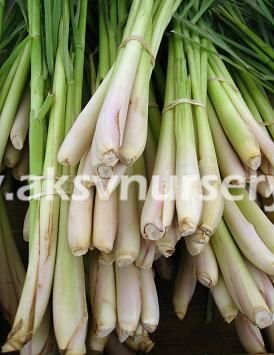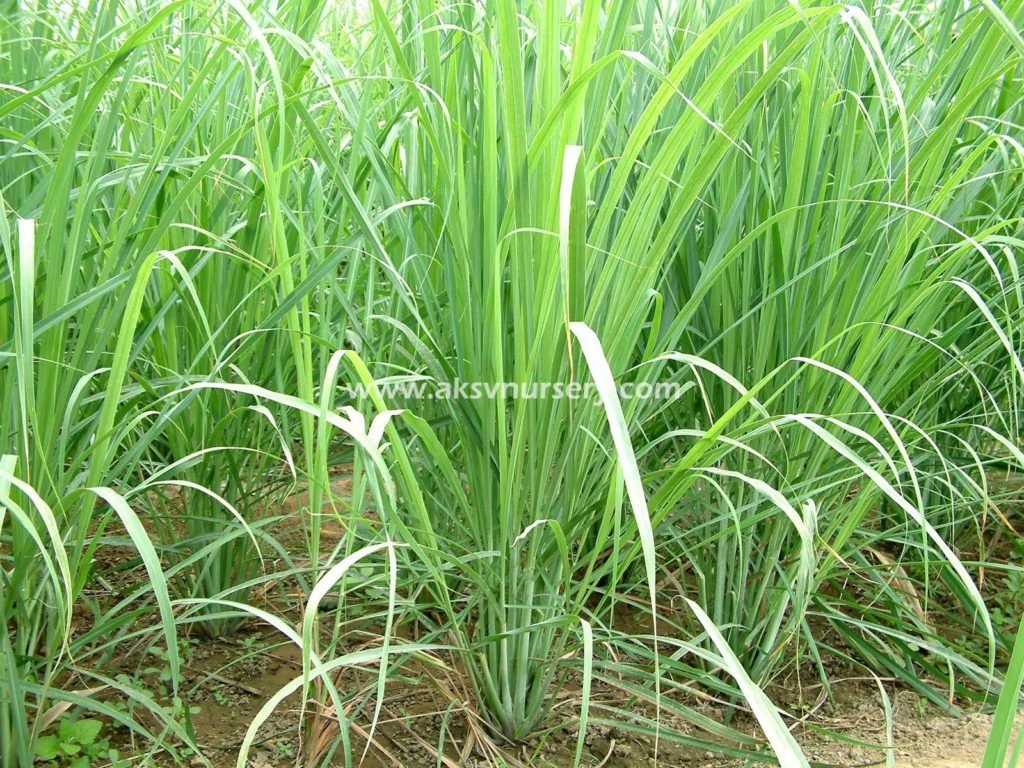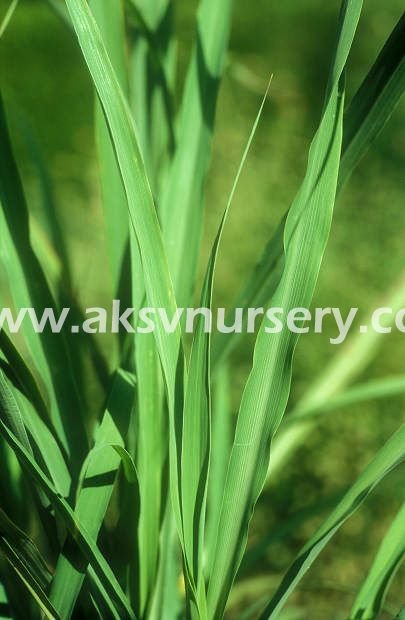Cymbopogon citratus
Family: Poaceae / Gramineae
Lemon Grass, Oil Grass
Origin: India
Widely used in Thai (Tom Yum Gum soup) and Vietnamese cooking. Lemon grass is a perennial, which means once you plant it, the grass comes back year after year. Depending on the area you live in the plant will go dormant in the winter. In harsh climates the plant will need to be potted and wintered indoors. This aromatic herb is used in Caribbean and many types of Asian cooking and has become very popular in the United States. Most of the commercial crops for the United States are grown in California and Florida. Lemon grass is also used for medicinal purposes. This fragrant grass is a versatile performer in the kitchen where it can be used in teas, beverages, herbal medicines, and Eastern inspired soups and other dishes. Lemongrass is equally versatile in the garden. This tropical grass grows in dense clumps that can grow to 6 ft (1.8 m) in height and about 4 ft (1.2 m) in width. The straplike leaves are 0.5-1 in (1.3-2.5 cm) wide, about 3 ft (0.9 m) long, and have gracefully drooping tips. The evergreen leaves are bright bluish-green and release a citrus aroma when crushed. It is the leaves that are used as flavoring and in medicine. They are steam distilled to extract lemongrass oil, an old standby in the the perfumer’s palette of scents. The lemongrass plants that you are likely to encounter are cultivars and do not typically produce flowers. Gardeners in subtropical areas will enjoy using lemongrass in beds and borders. It also does well in tubs and containers. It is especially nice along walkways where plants release fragrance when brushed against by passersby. If you live in a frosty area, you can enjoy it as an annual. You can also pot it up for the winter and keep it in a brightly lit area indoors. Lemongrass has been used for centuries as the source of an aromatic oil that is used in perfumery, flavorings and herbal medicine. Keep some around the house to add a lemony snap to ice tea and interest to your stir fries. To harvest, dig up a clump, separate the sections, cut off the roots and tops keeping about 6 in (15 cm) of the light colored base. Natural way or controlling mosquitoes and other pests – try some near your patio. Good for dogs and gives them fresh breath.








